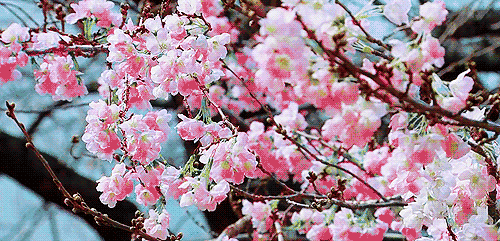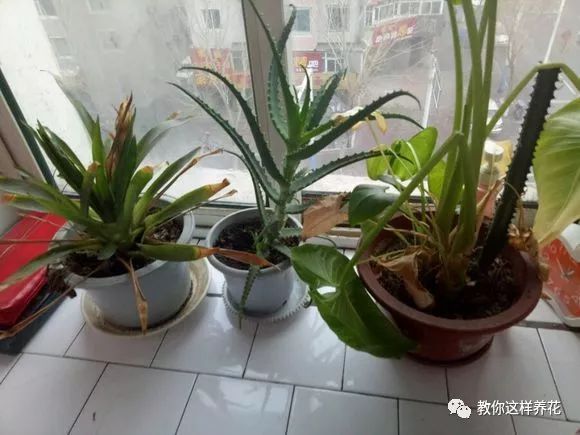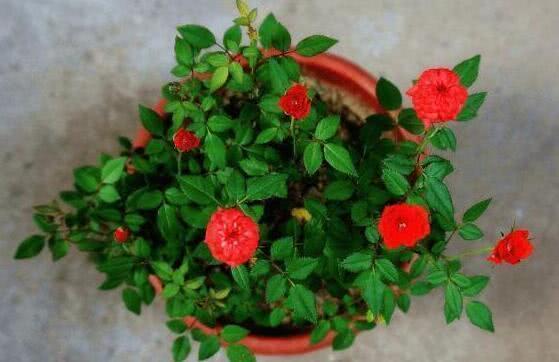It turns out that ginseng, Ganoderma lucidum and Dendrobium can be grown at home? It's amazing.

There are really many god people in Huahua's flower friends group, and there is not a flower friend from Huangshan Jingde who is talking about growing Ganoderma lucidum at home! Why do you want to grow Ganoderma lucidum at home? the wild Ganoderma lucidum in the hometown of this flower friend is very famous all over the country, and there are many wild Ganoderma lucidum in the mountains, so I asked if Huahua could be planted with Ganoderma lucidum spores. To tell you the truth, Huahua is not an expert in this respect, but some flower friends do grow ginseng and Ganoderma lucidum at home. Let's take a look.
"
The king of grass
"
Introduction of ginseng
Ginseng is a perennial herb of Araliaceae, which likes shade, leaves without stomata and palisade tissue, can not retain water, leaves will burn if the temperature is higher than 32 degrees. It usually blossoms for 3 years and bears fruit for 5-6 years, flowering from May to June and fruiting from June to September. Growing between 33 and 48 degrees north latitude, it is one of the famous "three treasures of the northeast".
Ginseng is a very famous tonic, known as the king of herbs, suitable for regulating blood pressure, restoring heart function, neurasthenia and physical weakness, but also has expectorant, stomach, diuresis, excitement and other effects.
In fact, the current artificial planting technology is more mature, and the annual output has been increasing, so the price of ginseng has dropped a lot in recent years, compared with a few decades ago, it is a lot of cabbage.
Planting of Ginseng
Ginseng is a kind of cold, moist and shade-tolerant medicinal plant, which is not only afraid of stagnant water, but also not resistant to drought, avoid bright light, and have strict requirements on the growth environment.
Flowerpots should choose pots with a diameter above 20CM and a height above 25CM. Generally, 2-3 ginseng seedlings can be planted in one pot.
The soil generally chooses the humus soil with loose texture and good drainage or peat soil or orchid soil, and a drainage layer is needed at the bottom. There are also some flower friends refer to the original growth environment, the bottom layer is covered with a layer of 5cm or so sandy soil, the middle 10cm around loess, the surface 5cm around humus.
Ginseng has relatively strict requirements for moisture, and it is also afraid of waterlogging when it is wet. Excessive moisture is susceptible to diseases and rotting roots. If the moisture is too small, when the soil moisture is less than 30%, it will cause the water diffusion of ginseng root system and make the ginseng fibrous root dry.
Please refer to:
[February-April] watering interval is about 5 days [September-November] watering interval is about 5 days.
[April-September] watering interval is about 3 days [November-February] watering interval is about 7 days.
Ginseng likes shade, likes to scatter weak light, and is afraid of direct sunlight. The light is too strong, the plants are short, and the leaves are thick and yellow. The light is too weak, the plant is thin and tall, and the leaves are thin and thick green. It is generally maintained in a cool and ventilated place.
Ginseng is afraid of high temperature and can withstand severe cold. During the period of growth and development, the average temperature is 15-20 ℃. When the temperature is higher than 30 ℃ or lower than 10 ℃, the ginseng is dormant, the leaves are scorched in the hot sun above 36 ℃, and when the temperature is below-6 ℃, the stem will lose its growth function.
It can sprout and grow when the ground temperature is above 12% ℃ in spring, but it is most afraid of the "slow sun freezing" in early spring (that is, the air temperature rises and falls suddenly, and the surface freezes), which is easy to cause freezing injury and root bark damage ("broken belly"). After sowing, the temperature for seedling stage is above 10 ℃, the temperature for 1-2 years old is above 12 ℃, and the most suitable temperature for growing period is 20-25 ℃.
Ginseng does not like fertilizer, fertilization will cause ginseng rotting roots.
Ginseng bar feather forest ginseng antler planting case:
Standing, buds should be deep in the soil, not too shallow, too shallow, easy to dry and easy to fall; not too deep, not easy to be unearthed. After cultivation, water thoroughly and wait for it to be unearthed. After ginseng is unearthed in the later stage, avoid watering the leaves, because the leaves are easy to get sick.
Spores should not be exposed and soil should not be compacted.
Emergence of seedlings
It's the same every day, and it grows fast.
Blossom, bear fruit
(ginseng bar feather forest ginseng antler)
A case study of cold arrogance planting among flower friends:
It is better to plant ginseng at an oblique angle of 30 °.
The five-year ginseng on the left and the four-year ginseng on the right can tell the age of ginseng by looking at the leaves. Four-year-old ginseng has three palm compound leaves and five-year-old ginseng has four palm compound leaves.
Many flower friends do not recommend the use of seeds, mainly due to the lack of technical conditions, the germination rate is relatively low, ginseng seedlings are relatively simple.
In high and low temperature weather, ginseng seedlings will lose their leaves dormant, but do not fail to manage, as long as the roots are good, they can still send out new leaves.
More than 32 ℃ in summer, ginseng seedlings will dry up and fall off, or even die. Therefore, it is generally difficult to grow in the south, and flower friends in the north can consider planting, and the high temperature in summer can be put into the air-conditioned room.
Cultivation of Panax quinquefolium
American ginseng is also a perennial plant of Panax ginseng of Araliaceae, alias American ginseng, American ginseng, originally from Greater Quebec in Canada and Wisconsin in the United States.
Generally speaking, ginseng, especially raw ginseng (white ginseng), is suitable for those with strong physique in winter, or for those with low blood pressure or shock. Although Western ginseng has the effect of tonifying qi, it is applicable to different people, and there is a difference between cold and temperature in terms of medicinal properties. American ginseng is not hot and dry, and American ginseng can be used for those who are not suitable for ginseng treatment and heat tonic, including summer Sheng Jin and reducing heat. Especially in the fight against fatigue, the effect of American ginseng is more obvious.
Potted Panax quinquefolium can be planted in early March or in the middle or late October, and the survival rate can be improved by growing with seedlings.
The culture soil of American ginseng is best made from hillside humus soil (6 parts), mature oak leaves (2 parts), rotten animal manure (1 part) and fine sand (1 part), and then mixed evenly. But do not use willow leaves and fresh oak leaves as cultivation soil.
Ginseng seedlings should choose strong seedlings with sufficient pulp gas, full buds and no diseases and insect pests.
The size of the flowerpot can be determined according to the size of the ginseng seedling, such as the two-year-old ginseng seedling should use the pot mouth diameter 20~30cm, pot depth 25~35cm flowerpot or wooden box.
(Sina blog Happy yqyl)
American ginseng is a negative plant, afraid of strong light, like weak light, astigmatism, so we must do a good job of shading American ginseng in summer. Sunshades can be used with Reed curtains, sunshade nets and so on. Under the strong sunlight, American ginseng is easy to get sunburn disease.
Potted American ginseng should be watered regularly and should not be watered too much. It is appropriate to keep the soil moisture between 25% and 30%, not more than 30%, otherwise it is easy to get scab.
American ginseng is sensitive to temperature. When watering, try to keep the water temperature, soil temperature and air temperature consistent. The room temperature needed for American ginseng in the whole growing period should be kept between 19 ℃ ~ 25 ℃. Too high or too low temperature is disadvantageous to the growth of American ginseng. American ginseng enters the dormant period in winter, do not water too much to protect the soil moisture
Cultivation of Ganoderma lucidum
Ganoderma lucidum, also known as Lin Zhongling, is the fruiting body of the fungus Ganoderma lucidum of the family Polyporaceae. It has the effect of replenishing qi and calming the mind, relieving cough and relieving asthma, and prolonging life. For dizziness and sleeplessness, palpitation, shortness of breath, neurasthenia, fatigue, cough and asthma.
There are five kinds and six kinds of wild Ganoderma lucidum, namely, Ganoderma lucidum, Ganoderma lucidum and Ganoderma lucidum. Ganoderma lucidum is flat, bitter and non-toxic. The Lord has a knot in the chest, invigorates the heart, tonifies the middle, increases wisdom, never forgets, wears light body for a long time, and prolongs the years of immortals.
Ganoderma lucidum is actually a kind of fungus, which is not like flowers and plants, but more like mushrooms. So it can only be cultivated according to the mushroom culture method.
Now there are ready-made bags for purchase in many places, and many bags for cultivating mushrooms can also be used to cultivate Ganoderma lucidum. The commonly used medium is 60% cottonseed shell, 20% sawdust, 20% wheat bran, 1% sugar, 2% bean cake, 1.5% gypsum, 1.5% lime, and 0.4% magnesium sulfate.
The bacterial bag needs to be sterilized and inoculated when the temperature of the bag drops below 30 ℃.
In fact, strain cultivation is a very strict process, it directly determines the quality of Ganoderma lucidum! No matter in terms of variety or late survival, high-purity fine varieties and aseptic environment are very important. At present, this part of the work is basically completed by the merchants.
During the germicidal stage, the light should be dark, the air humidity should be controlled below 70%, and the temperature should be kept at 24-28 ℃. Turn the bag every 7-10 days, clean up and deal with the pollution in time. Generally, the mycelium can be filled with material bag after 25-30 days, and the seeds can be expanded after 5-7 days. The mycelium culture is the same as the cultivated species.
Ganoderma lucidum can be arranged from late April to mid-October, that is, it can be removed from the culture room. When the Ganoderma lucidum bag is full of mycelium and the primordium begins to appear, the management of Ganoderma lucidum can be carried out.
After about 20 days of budding, Ganoderma lucidum can be transplanted into an appropriate basin where the soil is fine river sand and must be treated with antivirus. When Ganoderma lucidum is transplanted into the pot and needs to continue to grow, it is also necessary to maintain the conditions needed for the growth of Ganoderma lucidum, especially the moist condition, so as to avoid the phenomenon of premature aging.
The sign of the maturity of Ganoderma lucidum is that the cap changes from thin to thick, the color changes from light yellow to reddish brown, the white growth circle around the cap has disappeared, and a small amount of spore powder is scattered in the tube. The fungus cap turns to lacquer color.
Ganoderma lucidum can be cut off from the root of the sesame stalk with a sharp knife or twisted directly by hand during harvest. Ganoderma lucidum should be dried on a clean cement field in time to strictly prevent sundries from sticking, or it can be dried at 40-60 ℃ to reduce the moisture to 12%.
Growing Ganoderma lucidum by yourself is also a great sense of achievement!
At present, some Ganoderma lucidum bonsai on the market are fixed with white cement, glued with all kinds of glue, can not be eaten, some are sterilized at high temperature, fixed with activated carbon, can be eaten, can be seen and eaten! Pay attention to the choice!
Planting of Dendrobium
Dendrobium was used very early in tradition. Dendrobium was listed as the first of the nine immortal herbs in China in the Taoist classic "Daozang" in the Tang Dynasty, which has the effect of benefiting stomach, nourishing yin and clearing heat. And Dendrobium is also hot these years, very popular. In addition to buying, Dendrobium can also be grown at home, and some flowering varieties are as beautiful as Phalaenopsis and other orchids.
Dendrobium should choose a breathable flowerpot with broken tiles at the bottom, which can be covered with sawdust and broken bark to the rhizome, not too deep. Put in the bright light scattered light maintenance, ventilation should be good, watering should see dry and wet, must not accumulate water.
Dendrobium is afraid of cold, the suitable growth temperature is 10-35 ℃, and some can withstand the low temperature of 0 ℃, but it is generally safe to survive the winter no less than 5 ℃.
General Dendrobium in early spring and autumn every year, apply fertilizer twice, each time about 10 slow-release fertilizer. The number of flowers of Dendrobium is large, and there are more requirements for fertilizer. Phosphorus and potassium fertilizer can be sprayed to the leaves every 10 days or so, the concentration should be light, and a few slow-release fertilizers can be applied in the pot soil every month.
(Dendrobium zpcx2)
There are more than 50 kinds of Dendrobium with medicinal value, such as Dendrobium candidum, Dendrobium candidum, Dendrobium Huoshan, Dendrobium candidum, Dendrobium candidum, Dendrobium nobile, Dendrobium candidum, Dendrobium candidum and so on. If the plan is to give priority to food, you can consider these varieties of Dendrobium.
In Dendrobium, Dendrobium nobile, Dendrobium nobile and Dendrobium Tiangong are very beautiful varieties of flowers, and the flowers are as beautiful as waterfalls.
(the descendant of Dendrobium Farmer)
Dendrobium candidum
Dendrobium candidum
What else did you grow?
Stop hiding!
Let's share with you.
After reading it, show it to the flower friends who need it.
- Prev

All the flowers on the balcony are dead in summer? You can save your life if you save it quickly.
Summer temperature is high, flowers and plants are easy to have problems, some flower friends said that a few days, a balcony flowers are dead, if there is a problem, hurry to save, but also can save a life, save a few flowers and plants. The temperature of flower and plant treatment is high in summer.
- Next

It's a natural growth agent more powerful than aspirin, sprouting and rooting super fast.
With the improvement of people's living standards, more and more people fall in love with flower cultivation, and with the growth of flower cultivation team, more and more flower cultivation knowledge and methods emerge one after another, many of which are re-handy of domestic garbage, such as Taomi.
Related
- Wuhan Hospital Iron Tree Blooming Result Was Instantly Frightened by the Gardener Master
- Which variety of camellia is the most fragrant and best? Which one do you like best?
- What is the small blue coat, the breeding methods and matters needing attention of the succulent plant
- Dormancy time and maintenance management of succulent plants during dormancy
- Minas succulent how to raise, Minas succulent plant pictures
- What are the varieties of winter succulent plants
- How to raise succulent plants in twelve rolls? let's take a look at some experience of breeding twelve rolls.
- Attention should be paid to water control for succulent plants during dormant period (winter and summer)
- Watering experience of twelve rolls of succulent plants
- Techniques for fertilizing succulent plants. An article will let you know how to fertilize succulent plants.

